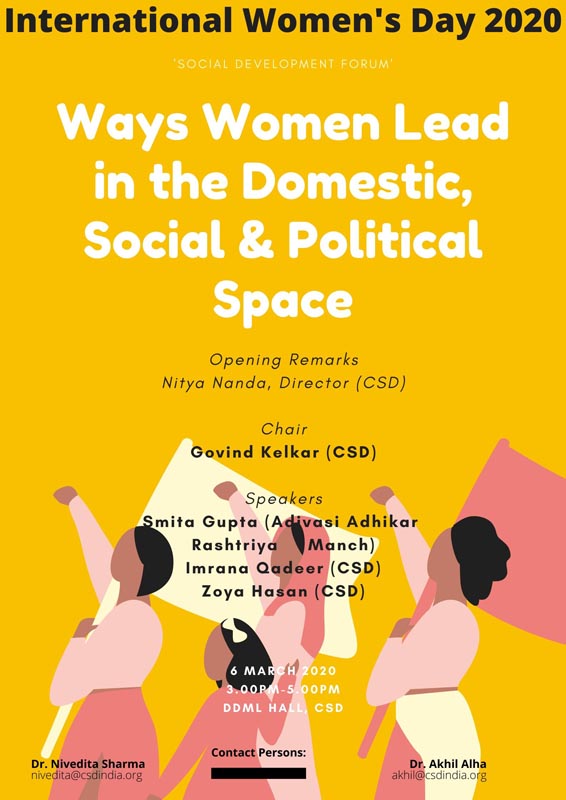Schedule of the Programme
Speaker: Abhishek Bhosle, Assistant Professor, Vishwakarma University, Pune
Chair: Professor Manoranjan Mohanty, Distinguished Professor and Vice-President, CSD New Delhi and Editor, Social Change
Date: March 19, 2020 (Thursday)
Time: 3.00-4.30 PM
Venue: Durgabai Deshmukh Memorial Lecture Hall, CSD, Sangha Rachna, 53 Lodi Estate, New Delhi 110003
About the Presentation:
Dr B R Ambedkar on 23 February 1941 in a meeting in Solapur district gave a call to Dalits to fight for seeking government-owned wasteland for cultivation. By 1958-59 the movement spread in other parts of Maharashtra and Dalit women led the movement along with their male counterparts. Many were jailed with their kids. In 1964-65, Ambedkar’s close confidant Bhaurao alias Dadasaheb Gaikwad took the reins of the movement and launched a massive agitation of landless labourers across India to claim government land for cultivation. Over 3.4 lakh landless people were jailed across India. This was the biggest movement by Dalits in India after Dr. Ambedkar’s death in 1956. The movement came alive again in 1990 under the leadership of Eknath Awhad under the banner of Jameen Adhikar Andolan (Land Rights Movement).
As landless Dalits turned cultivators, villagers and local leaders turned furious. The struggle to get control of these wastelands and to retain cultivation rights on these lands has not been an easy one for Dalit women. They had to confront opposition not only from their families and caste mates, but also from upper castes landowners in the villages who, on experiencing labour shortage because of landless labourers turning cultivators’ often orchestrated attacks on Dalit bastis and burning standing crops on the lands cultivated by Dalits. Dalit women farmers remained undaunted by such attacks and continued cultivation as it helped them to escape severe poverty, send their children to school and gradually earn a higher say in decision making at the family and the societal level. The Maharashtra government passed orders in 1978 and then in 1991 to extend legal rights to Dalits and other backward castes who have encroached the government owned lands for cultivation. However, a majority of cultivators were left out of the legalization process because they had no proof of cultivating these lands.
This paper, based on available literature as well as personal interviews of Dalit women cultivators, traces the trajectory of Jameen Adhikar Andolan over the decades, role of women in sustaining this movement, and the mechanism through which the movement made them feel more empowered in socio-economic realm.
About the Speaker: Abhishek Bhosale, a Development Communication researcher works on the ideas of Development from the perspectives of caste and gender. His current research projects revolve around the struggle of tribals, the peasant class and landless labourers in the Shramik Movement in Shahada and Nandurbar in Maharashtra, and Dalit struggle for land rights in Marathwada. He is also actively engaged with a people’s movement at the grass root level to promote media literacy and the democratization of Media.
Abhishek is currently teaching Journalism and Mass Communication at Vishwakarma University, Pune where he is also a part of the core team for developing a research centre on Development Communication and Rural Journalism.
Abhishek has written articles and reportages on water crisis in Maharashtra and its impact on gender and caste relations, atrocities against minorities in Maharashtra, the film society movement in Kerala, and Journalism in times of conflict in Kashmir. He is a regular contributor to various media platforms like Daily Divya Marathi, Media Watch, Muktshabd, Aksharnama, Aksharlipi,etc. He also writes critical commentaries on contemporary media in the Sunday column called ‘Media Mania’ for Dainik Divya Marathi. He is on the review committee of a bilingual communication journal called ‘Media Messenger’.

